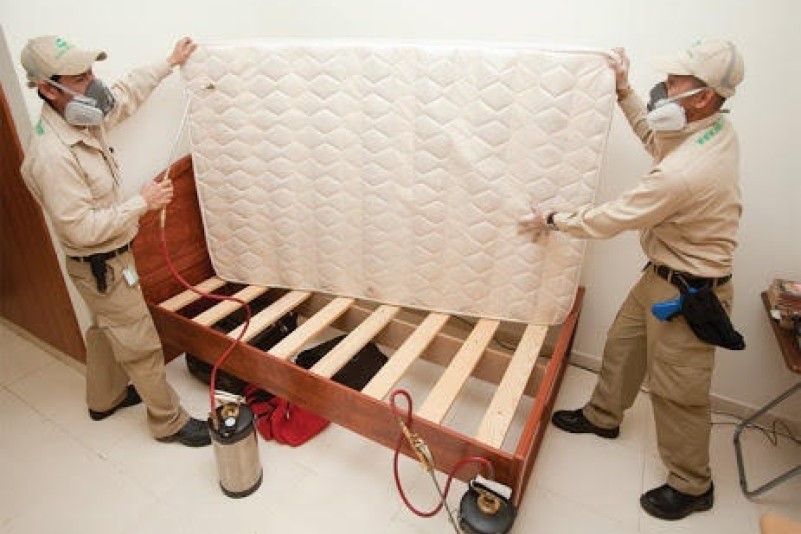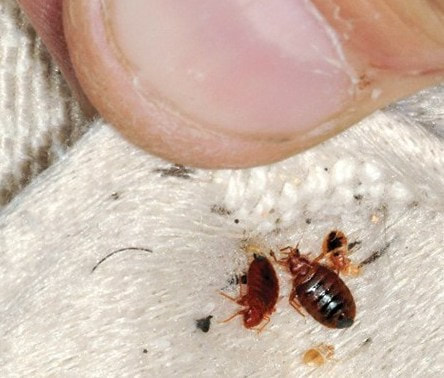Dependable Bed Bug Exterminator Near Me: DC Heat Treatment Specialists
Dependable Bed Bug Exterminator Near Me: DC Heat Treatment Specialists
Blog Article
Checking Out the Science Behind Bed Bug Heat Treatments as a Lasting Insect Monitoring Technique
One such method that has gotten grip in current years is the usage of warmth therapies to battle bed bug infestations. The complexities of exactly how warm successfully removes bed pests and the more comprehensive implications for sustainable pest management practices make this a topic worth exploring even more.
Bed Bug Heat Treatment Process

Thermal Death Factor for Bed Bugs
Subjecting bed bugs to raised temperatures past their thermal resistance variety is crucial for accomplishing effective elimination in warm therapy processes. The thermal fatality point for bed bugs refers to the temperature level at which these bugs can not survive. Research study shows that bed insects begin to perish when subjected to temperature levels above 113 ° F(45 ° C) for a continual duration. As the temperature boosts, so does the death rate of bed insects. At around 118 ° F(48 ° C ), bed pests begin to die swiftly, with a mortality rate of almost 99% within mins of exposure. This demonstrates the level of sensitivity of bed pests to heats and highlights the performance of heat treatments in getting rid of infestations. By getting to and keeping temperature levels above the thermal death point for bed insects, parasite management experts can make certain comprehensive elimination of bed insect populations, consisting of hard-to-reach locations where chemical therapies might be less effective. Comprehending the thermal death point for bed insects is essential for executing successful warm treatment methods and attaining lasting parasite monitoring outcomes.
Benefits of Warmth Treatments
Having developed the crucial thermal death point for bed insects, it is crucial to now discover the significant advantages that warm therapies supply in efficiently eliminating these resistant bugs. Heat therapies existing several essential benefits when contrasted to standard chemical methods. Among the main advantages is that heat can pass through deep right into gaps and splits where bed pests hide, ensuring that also the most hard-to-reach locations are warmed to dangerous temperature levels. This comprehensive approach not just eliminates More hints real-time insects but also targets bed pest eggs, avoiding future invasions.
In addition, warm treatments are non-toxic and ecologically pleasant, making them a sustainable parasite monitoring method. Unlike chemical pesticides, heat therapies do not leave hazardous deposits that can position threats to human health and wellness or the setting. This element is particularly essential in sensitive settings such as hospitals, schools, and property locations where chemical use might not be desirable.
Additionally, heat therapies have a high success price in eliminating bed insect visit this site right here infestations in a solitary treatment, lowering the need for several brows through and decreasing disruption to owners. This effectiveness not just conserves money and time however additionally offers comfort to those taking care of bed pest issues.
Efficiency of Warmth Therapy

Warmth therapies have the added benefit of killing bed insect eggs, which are usually immune to traditional chemical treatments. In general, the efficiency of warmth therapies in eradicating bed bug invasions makes them a reliable and sustainable bug monitoring approach.
Lasting Parasite Management Benefits
Applying lasting parasite administration methods provides long-term benefits for both the setting and public wellness. By using methods such as heat therapies for bug control, we can minimize the reliance on harmful chemical pesticides that can have damaging results on environments and human health and wellness - DC exterminator. Sustainable parasite administration techniques aid in maintaining biodiversity by targeting particular pests without damaging non-target organisms, thereby keeping a balanced ecological community
Moreover, sustainable parasite administration techniques contribute to the overall health and wellness and well-being of the general public. By minimizing direct exposure to toxic chemicals made use of in conventional parasite control techniques, warmth treatments provide a navigate to this site much safer choice for insect monitoring in domestic, commercial, and public areas. This decrease in chemical usage likewise aids in avoiding chemical residues from polluting dirt, air, and water, securing ecological quality.
Final Thought
To conclude, bed bug warm therapies have been shown to be a efficient and lasting bug monitoring strategy. The thermal death factor for bed pests makes them susceptible to heat treatments, which have many benefits over traditional chemical treatments. The efficiency of warm therapies in removing bed pest infestations while reducing environmental effect highlights the possibility of this approach as a lasting remedy for pest control.
The bed bug warm treatment process includes increasing the temperature level within ravaged locations to a degree that properly removes bed pests and their eggs. By getting to and keeping temperature levels over the thermal fatality factor for bed pests, parasite monitoring specialists can make sure detailed elimination of bed pest populaces, including hard-to-reach locations where chemical treatments might be much less effective. One of the main advantages is that warm can pass through deep into fractures and gaps where bed bugs conceal, ensuring that also the most hard-to-reach locations are heated up to deadly temperatures. Unlike chemical therapies that might leave behind immune populations, heat therapies use a safe and ecologically friendly solution that can pass through deep right into furniture, walls, and various other hard-to-reach areas where bed bugs conceal.
The thermal death point for bed pests makes them prone to heat therapies, which have many advantages over traditional chemical therapies.
Report this page